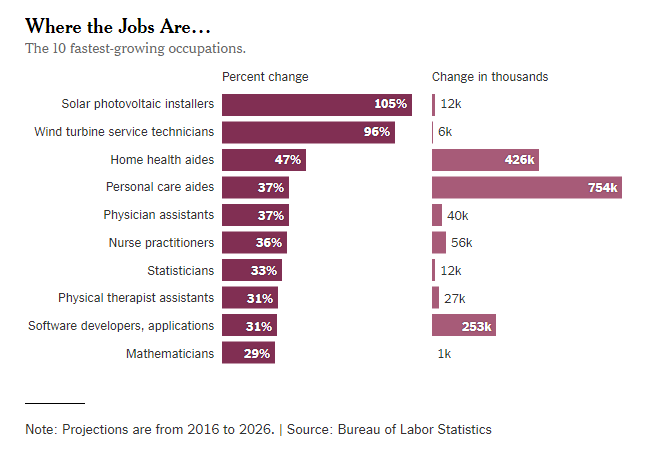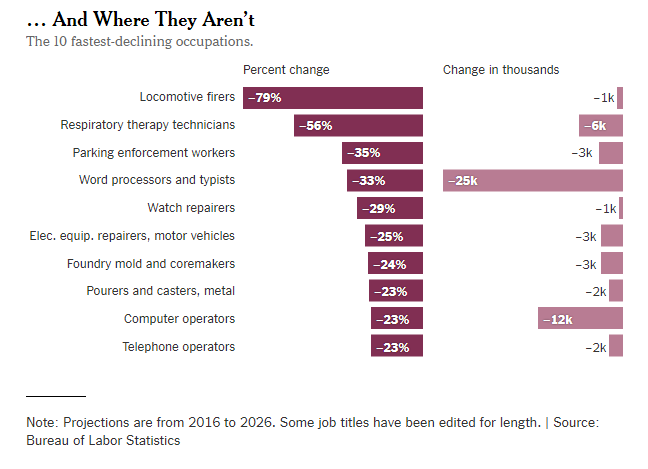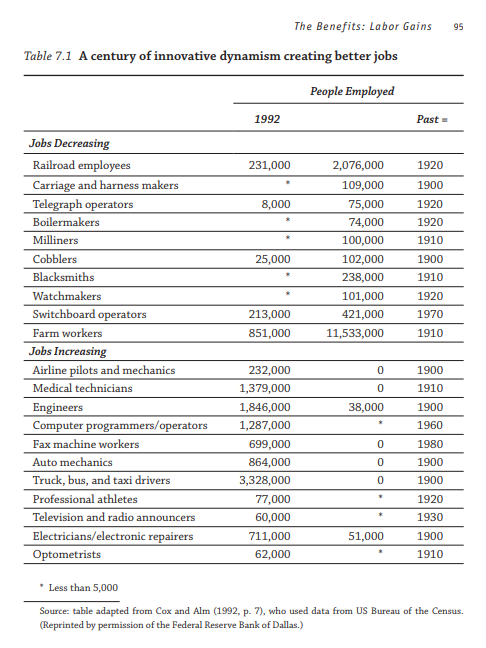(p. A1) BEIJING — Well before dawn, nearly a hundred people stood in line outside one of the capital’s top hospitals.
They were hoping to get an appointment with a specialist, a chance for access to the best health care in the country. Scalpers hawked medical visits for a fee, ignoring repeated crackdowns by the government.
. . .
The long lines, a standard feature of hospital visits in China, are a symptom of a health care system in crisis.
. . .
(p. A8) Instead of going to a doctor’s office or a community clinic, people rush to the hospitals to see specialists, even for fevers and headaches. This winter, flu-stricken patients camped out overnight with blankets in the corridors of several Beijing hospitals, according to state media.
Hospitals are understaffed and overwhelmed. Specialists are overworked, seeing as many as 200 patients a day.
And people are frustrated, with some resorting to violence. In China, attacks on doctors are so common that they have a name: “yi nao,” or “medical disturbance.” Continue reading “Under Chinese Socialized Medicine, Long Waits, Bribes, and Violent Attacks on Physicians Are Common”
Author: Art Diamond
As Some Occupations Decline, Others Advance


(p. B3) . . . the impact of automation is increasingly spreading to the service sector as well. Government economists expect steep declines in employment for typists, telephone operators and data-entry workers. Even jobs that might once have seemed relatively secure, such as legal secretaries and executive assistants, are expected to decline in coming years.
At the same time, technology is creating new opportunities for statisticians, engineers and software developers — the workers developing the algorithms that are changing the global job market.
For the full story, see:
(Note: ellipsis added.)
(Note: the online version of the story has the date Oct. 24, 2017, and has the title “A Peek at Future Jobs Shows Growing Economic Divides.”)
At Atari, Dabney Was the Inventor and Bushnell Was the Entrepreneur
(p. B14) Samuel F. Dabney, an electrical engineer who laid the groundwork for the modern video game industry as a co-founder of Atari and helped create the hit console game Pong, died on May 26 [2018] at his home in Clearlake, Calif.
. . .
Mr. Dabney, known as Ted, brought arcade video games to the world with Atari, a start-up that he and a partner, Nolan Bushnell, founded in Sunnyvale, Calif., in the early 1970s.
. . .
He shared an office at Ampex with Mr. Bushnell, a charismatic engineer who had helped pay his way through college as a carnival barker. Mr. Bushnell was struck by Mr. Dabney’s pure love of engineering.
“He was just all about ‘Let’s get it done,’ ” Mr. Bushnell said in an interview this week. “He was the kindest. He didn’t have an ego.” Continue reading “At Atari, Dabney Was the Inventor and Bushnell Was the Entrepreneur”
New York City Made $855 Million Selling Over-Priced Taxi Medallions to Trusting Immigrants
(p. A1) At a cramped desk on the 22nd floor of a downtown Manhattan office building, Gary Roth spotted a looming disaster.
An urban planner with two master’s degrees, Mr. Roth had a new job in 2010 analyzing taxi policy for the New York City government. But almost immediately, he noticed something disturbing: The price of a taxi medallion — the permit that lets a driver own a cab — had soared to nearly $700,000 from $200,000. In order to buy medallions, drivers were taking out loans they could not afford.
. . .
Medallion prices rose above $1 million before crashing in late 2014, wiping out the futures of thousands of immigrant drivers and creating a crisis that has continued to ravage the industry today. Despite years of warning signs, at least seven government agencies did little to stop the collapse, The New York Times found.
Instead, eager to profit off medallions or blinded by the taxi industry’s political connections, the agencies that were supposed to police the industry helped a small group of bankers and brokers to reshape it into their own moneymaking machine, according to internal records and interviews with more than 50 former government employees.
For more than a decade, the agencies reduced oversight of the taxi trade, exempted it from regulations, subsidized its operations and promoted its practices, records and interviews showed.
Their actions turned one of the (p. A20) best-known symbols of New York — its signature yellow cabs — into a financial trap for thousands of immigrant drivers. More than 950 have filed for bankruptcy, according to a Times analysis of court records, and many more struggle to stay afloat.
“Nobody wanted to upset the industry,” said David Klahr, who from 2007 to 2016 held several management posts at the Taxi and Limousine Commission, the city agency that oversees cabs. “Nobody wanted to kill the golden goose.”
New York City in particular failed the taxi industry, The Times found. Two former mayors, Rudolph W. Giuliani and Michael R. Bloomberg, placed political allies inside the Taxi and Limousine Commission and directed it to sell medallions to help them balance budgets and fund priorities. Mayor Bill de Blasio continued the policies.
Under Mr. Bloomberg and Mr. de Blasio, the city made more than $855 million by selling taxi medallions and collecting taxes on private sales, according to the city. Continue reading “New York City Made $855 Million Selling Over-Priced Taxi Medallions to Trusting Immigrants”
Due to “Safety” Regulations, Disabled Man Crawls Up Airplane Stairs
(p. B4) The activist, Hideto Kijima, said Vanilla Air staff initially told him he would not be allowed to board the small aircraft, which was flying from a small airport on the southern island of Amami to Mr. Kijima’s home in Osaka, because it lacked wheelchair-accessible boarding ramps or elevators.
Mr. Kijima was paralyzed from the waist down while playing rugby as a teenager and now uses a wheelchair.
. . .
He was visiting the island with a group of friends, and they offered to carry him up the short stairway from the tarmac, he said. But the airline told them that would violate safety regulations.
So he started crawling.
“I sat down on the stairs and started climbing up one at a time,” he wrote. “The staff told me to stop but I ignored them. How else was I supposed to get back to Osaka?”
He was allowed to take a seat once he reached the top, he said.
For the full story, see:
(Note: ellipsis added.)
(Note: the online version of the story has the date June 29, 2017, and has the title “Japanese Airline Apologizes After Disabled Man Crawls Aboard.”)
News Reports by A.I. Complement News Reports by Humans; Expanding Coverage of Routine Minor Recurring Events
(p. B1) As the use of artificial intelli-(p. B3)gence has become a part of the industry’s toolbox, journalism executives say it is not a threat to human employees. Rather, the idea is to allow journalists to spend more time on substantive work.
“The work of journalism is creative, it’s about curiosity, it’s about storytelling, it’s about digging and holding governments accountable, it’s critical thinking, it’s judgment — and that is where we want our journalists spending their energy,” said Lisa Gibbs, the director of news partnerships for The A.P.
. . .
In addition to leaning on the software to generate minor league and college game stories, The A.P., like Bloomberg, has used it to beef up its coverage of company earnings reports. Since joining forces with Automated Insights, The A.P. has gone from producing 300 articles on earnings reports per quarter to 3,700.
. . .
The A.P., The Post and Bloomberg have also set up internal alerts to signal anomalous bits of data. Reporters who see the alert can then determine if there is a bigger story to be written by a human being. During the Olympics, for instance, The Post set up alerts on Slack, the workplace messaging system, to inform editors if a result was 10 percent above or below an Olympic world record.
For the full story, see:
(Note: ellipses added.)
(Note: the online version of the story has the date Feb. 4, 2019, and has the title “The Rise of the Robot Reporter.”)
“Results Are Often Suspiciously Consistent with the Political Dispositions of the Modeler”
(p. 14) For scholars and popular writers alike, the Great Depression has long been a kind of economic Rorschach test. Free marketers look at the economic disaster and blame the Smoot-Hawley tariff, which inaugurated a global trade war; monetarists attack the Federal Reserve for its tight-money policies; Keynesians berate Herbert Hoover for his attempts to balance the budget as the crisis worsened.
. . .
Generally, . . . , Morris is remarkably evenhanded, giving both sides of scholarly debates in deep detail. This is particularly the case in his coverage of the New Deal, where he weighs the practical effects of the dizzying array of policies begun by Roosevelt, from his devaluation of the dollar to the creation of the Civilian Conservation Corps. And Morris explains in accessible prose how economists have used modeling to study the New Deal (he wryly notes that this “is still a work in progress — if only because results are often suspiciously consistent with the political dispositions of the modeler”).
Getting to Zero Food Waste Would Waste Time and Money that Can Be Better Spent
(p. A15) . . . is food waste that big of a deal? Start with the basic meaning of the term. The U.N. definition covers any “discarding or alternative (nonfood) use of food that is safe and nutritious for human consumption along the entire food supply chain.” Under that expansive meaning, giving your dog table scraps or putting them in your garden as fertilizer counts as “wasting” food, even though you’re putting it to productive use.
How much does this overstate true waste? In a recent article for the American Journal of Agricultural Economics, my colleagues and I suggest a new definition, one that simply covers food that has no productive use—in other words, it ends up in a landfill. We then show how widely cited official figures for food waste are both inconsistent with one another and may be significantly overstated.
Moreover, the optimal amount of food waste is not zero. Even the most efficient supply chain isn’t frictionless. If you are like me, your purchases of fresh fruits and vegetables more often than not reflect how you’d like to eat rather than how you actually eat. When you go out for dinner, you might end up not liking your meal, or you might order too much and not bring the leftovers home. Some of these issues may be solvable in theory, but the closer we get to zero waste, the more expensive trying to eliminate waste altogether would become.
For the full commentary, see:
(Note: ellipsis added.)
(Note: the online version of the commentary has the date Aug. 24, 2017, and has the same title as the print version.)
Bellemare’s co-authored academic article, mentioned above, is:
Table 7.1 and Table 7.2 Correctly Formatted in Free PDF


After my last viewing of the page proofs for my Openness to Creative Destruction, formatting errors were introduced by Oxford University Press (OUP) into Table 7.1 and Table 7.2.
A PDF with corrected versions of the tables can be downloaded for free at:
https://www.artdiamond.com/DiamondPDFs/CorrectedPages_94_%20thru_96withHeading.pdf
Democrat Warren Buffett Admits to Being “a Card-Carrying Capitalist”
(p. B1) The most prominent face of capitalism — Warren Buffett, the avuncular founder of Berkshire and the fourth wealthiest person in the world, worth some $89 billion — appeared to distance himself from many of his peers, who have been apologizing for capitalism of late.
“I’m a card-carrying capitalist,” Mr. Buffett said. “I believe (p. B3) we wouldn’t be sitting here except for the market system,” he added, extolling the state of the economy. “I don’t think the country will go into socialism in 2020 or 2040 or 2060.”
There is something oddly refreshing about Mr. Buffett’s frankness.
. . .
Mr. Buffett’s moral code is one of being direct, even when it is not politically correct. In his plain-spoken way, Mr. Buffett, a longtime Democrat, acknowledged that the goal of capitalism was “to be more productive all the time, which means turning out the same number of goods with fewer people or churning out more goods, with the same number,” he said.
“That is capitalism.” Two years ago at the same meeting, he bluntly said, “I’m afraid a capitalist system will always hurt some people.”
. . .
. . . at his core, he believes that the pursuit of capitalism is fundamentally moral — that it creates and produces prosperity and progress even when there are immoral actors and even when it creates inequality.
. . .
One prominent chief executive I spoke with after the meeting said he wished he could speak as bluntly as Mr. Buffett. He said in this politically sensitive climate, he often has to tiptoe around controversial topics and at least nod at the societal concern of the moment.
Therein lies the truth of the particular moment that the business community faces and one that, at least so far, Mr. Buffett, at age 88, may be immune from.
And so while Mr. Buffett may have missed an opportunity to use his perch, he comes to his views of a just business world honestly.
For the full commentary, see:
(Note: ellipses added.)
(Note: the online version of the commentary has the date May 5, 2019, and has the title “Warren Buffett’s Case for Capitalism.”)
Caring Bonds Among Sentient Beings Refute “Anthropodenial”
(p. 1) The two old friends hadn’t seen each other lately. Now one of them was on her deathbed, crippled with arthritis, refusing food and drink, dying of old age. Her friend had come to say goodbye. At first she didn’t seem to notice him. But when she realized he was there, her reaction was unmistakable: Her face broke into an ecstatic grin. She cried out in delight. She reached for her visitor’s head and stroked his hair. As he caressed her face, she draped her arm around his neck and pulled him closer.
The mutual emotion so evident in this deathbed reunion was especially moving and remarkable because the visitor, Dr. Jan Van Hooff, was a Dutch biologist, and his friend, Mama, was a chimpanzee. The event — recorded on a cellphone, shown on TV and widely shared on the internet — provides the opening story and title for the ethologist Frans de Waal’s game-changing new book, “Mama’s Last Hug: Animal Emotions and What They Tell Us About Ourselves.” Continue reading “Caring Bonds Among Sentient Beings Refute “Anthropodenial””

